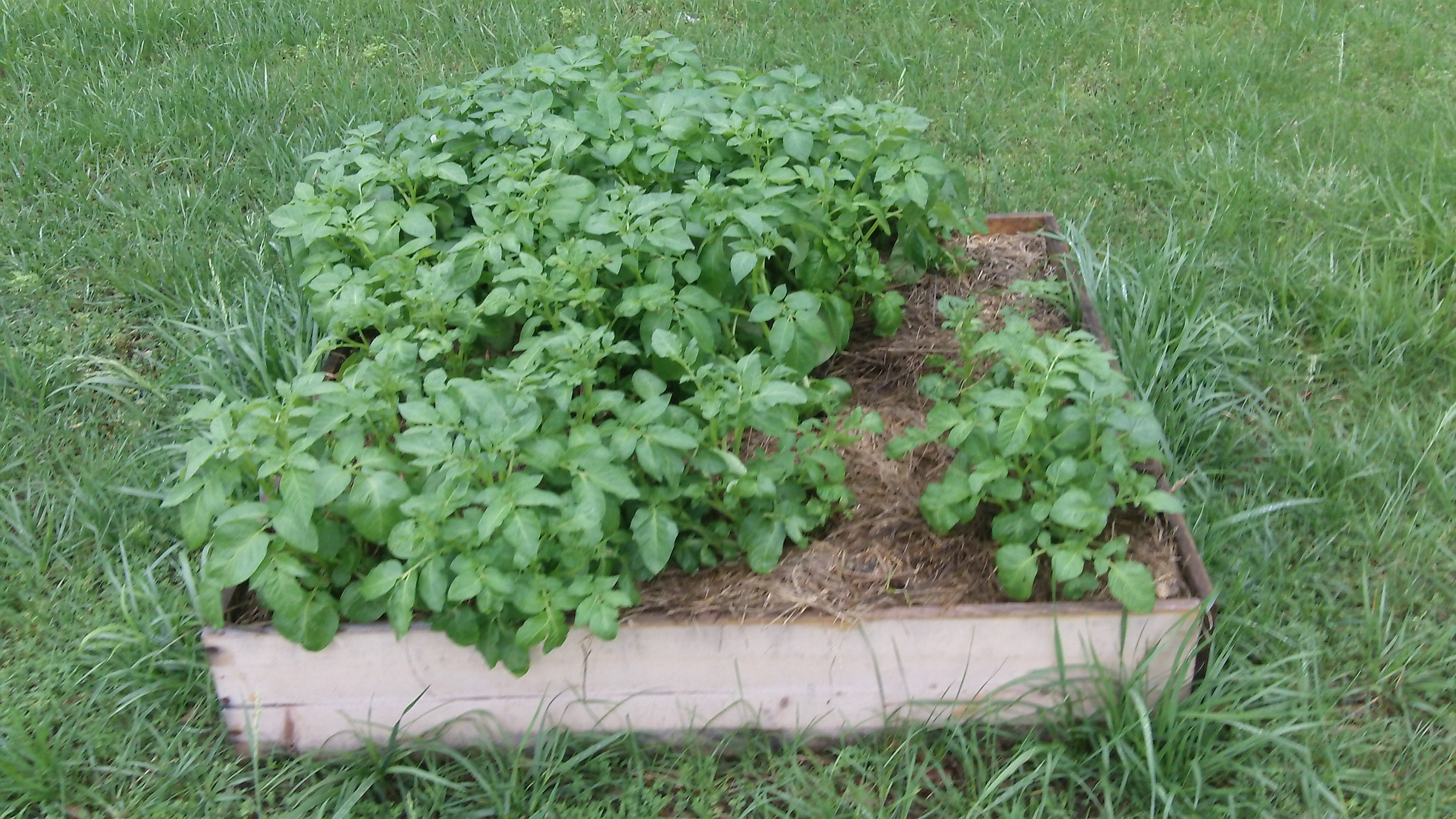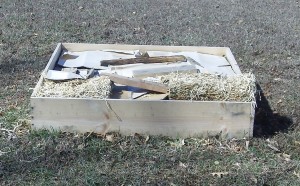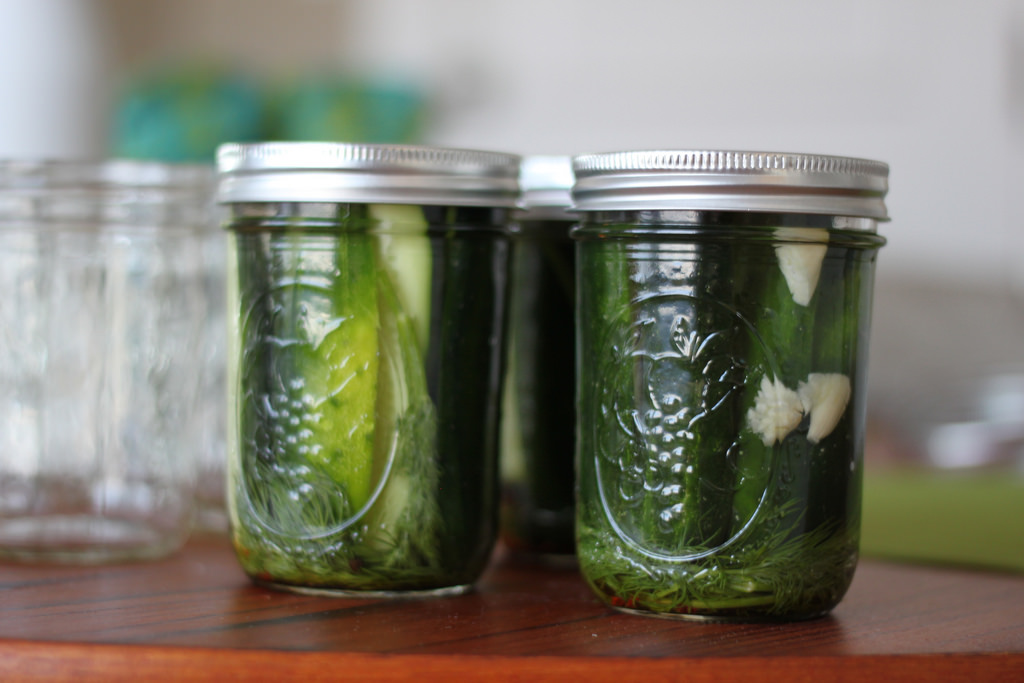My Experiments With Modified Square Foot, Ruth Stout, Hugel-Something-or-Other Gardening
Shared by John Wesley Smith
I’m a fan of intensive, low maintenance gardening. The less work you do for the most food, the better. Over the years I’ve experimented with various gardening methods and have combined some as well. As with all experiments, some work better than others, but it’s always fun and exciting to see the outcome.
In addition to doing some container gardening this year, I’m doing square foot gardening with six beds. Three are 4′ x 4′, one is 4′ x 6′, and two are 4′ x 8′. My friend, Gerald, helped me get the materials and build each bed. All but two were built within the past few months.
Each bed contains at least six inches of soil. My preferred soil is ProMix for indoor plants because it contains vermiculite, whereas the outdoor mix doesn’t. A 44 lb bag costs about $15 and it takes seven bags to fill a 4′ x 8′ bed. That sounds costly, but it’s a lot cheaper than Mel Bartholomew’s recommended Mel’s Mix (Bartholomew is the founder/inventor of the Square Foot Gardening method). You can add any amendments you like to my soil blend.
Believing microbial life is a key to success, I’m adding various products to the soil to foster growth of beneficial fungi and bacteria. I plan to add more occasionally throughout the season, including diluted molasses, which provides food for the friendly microbes.
Bed #3 has gotten special treatment. It’s one of the 4′ x 4′ beds. When it was built in November, we added a bag of Gardener’s Pride, which contains beneficials. I stirred in a couple bags of cow manure, too. A few days later I added in soil from six 3-gallon buckets used for container gardening. This soil had been made mostly from compost and had become dense and compacted so it needed to be broken up, aired out and mixed in with better soil. A couple of days after this, Gerald and I added a little azomite (rock dust), bone meal, brown rice flour and Root Zone granules. Then I watered with a weak molasses solution.
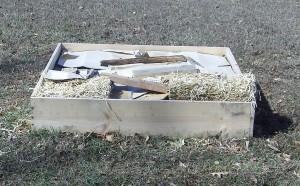 Soon I started covering the bed with cardboard. It didn’t fully break down into compost. However, it protected the soil and rotted sufficiently to be added to a barrel of compost in the making. In mid March I started peeling back the cardboard and replaced it with a thick layer of hay. Around the same time, I planted five Goldrush Russet potatoes held over from last year’s crop. In early April I planted Burbank Russets to fill out the bed.
Soon I started covering the bed with cardboard. It didn’t fully break down into compost. However, it protected the soil and rotted sufficiently to be added to a barrel of compost in the making. In mid March I started peeling back the cardboard and replaced it with a thick layer of hay. Around the same time, I planted five Goldrush Russet potatoes held over from last year’s crop. In early April I planted Burbank Russets to fill out the bed.
I’ve put hay on top of all six beds to incorporate the Ruth Stout method. This calls for a thick layer of several inches of hay mulch. So far, potatoes, onions and beans are doing well in their respective beds.
Bed #6 was built in early April and represents another experiment. Instead of seven bags of ProMix, we used six, along with a couple of bags of Buffaloam 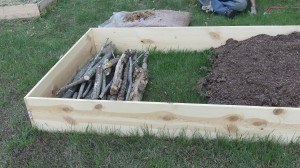 (manure), leaving room at one end for a mini Hugelkultur bed. Hugelkultur uses rotting wood for growing medium. We buried rotting branches with soil and wood mulch. It was then covered with hay like the other beds.
(manure), leaving room at one end for a mini Hugelkultur bed. Hugelkultur uses rotting wood for growing medium. We buried rotting branches with soil and wood mulch. It was then covered with hay like the other beds.
We gardeners thrive on experiments and anticipation. Naturally, I’m eager to harvest what I’m growing in my modified square foot beds. If you’ve got limited space or if you want to simplify your survival gardening, I highly recommend square foot gardening. Remember also to feed your soil since that will feed your plants, so they can feed you.
Photo captions:
01–Cardboard covers bed #3 in February.
 02–One end of bed #6 contains the makings of a Hugelkultur bed.
02–One end of bed #6 contains the makings of a Hugelkultur bed.
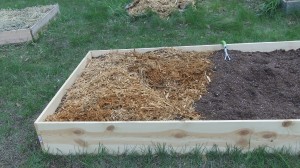 03–Branches in bed #6 were covered with soil and wood mulch before a layer of hay covered the whole bed.
03–Branches in bed #6 were covered with soil and wood mulch before a layer of hay covered the whole bed.
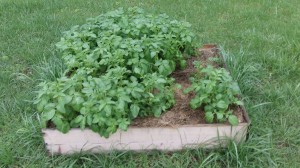 04–Potatoes grow well in bed #3 in early May, thanks to the addition of various products to foster growth of beneficial soil microbes.
04–Potatoes grow well in bed #3 in early May, thanks to the addition of various products to foster growth of beneficial soil microbes.
Author Bio:
John Wesley Smith
John Wesley Smith is a former radio broadcaster who taught his children at home. He’s an avid reader, writer and gardener. He lives with his wife in central Missouri, where they work hard to get by like so many others these days. His goal is to help preppers at DestinySurvival.com as he continues along his own preparedness journey. John hosts DestinySurvival Radio on Thursday afternoons at 1:00 Central Time on the Preparedness Radio Network.

